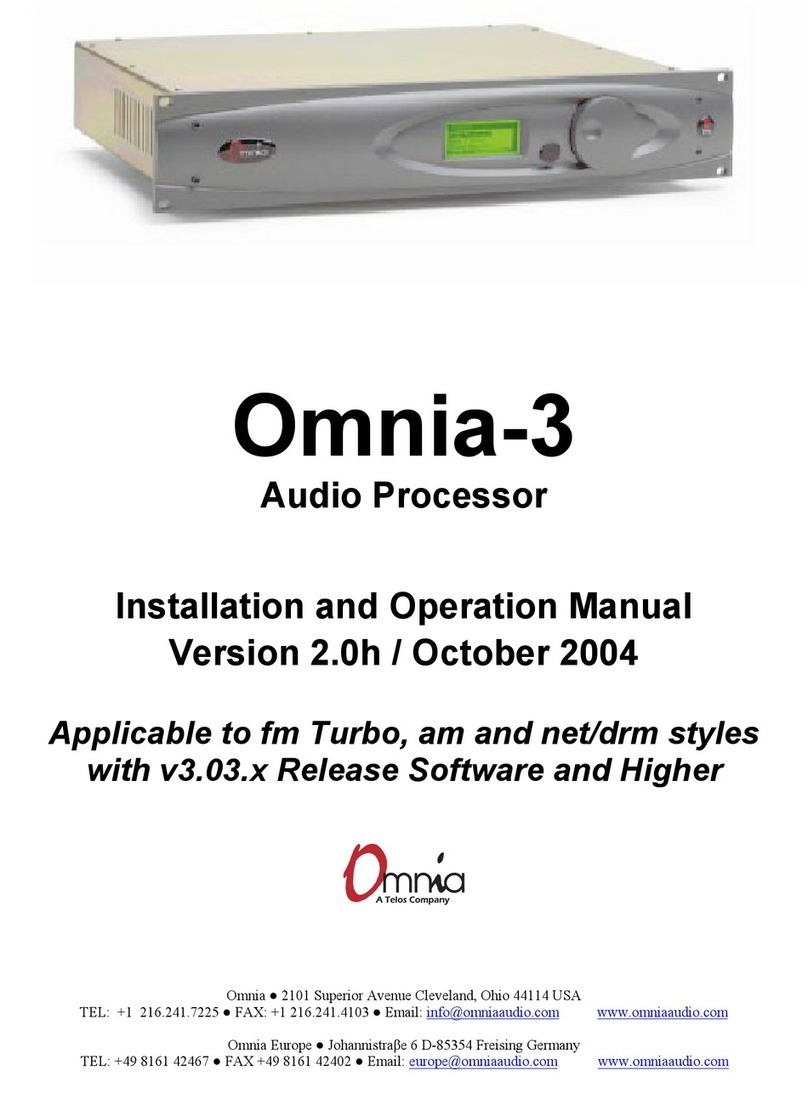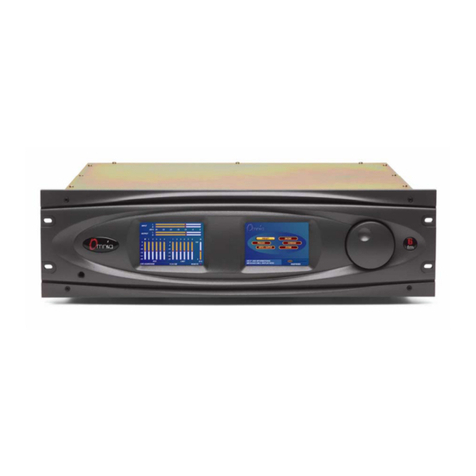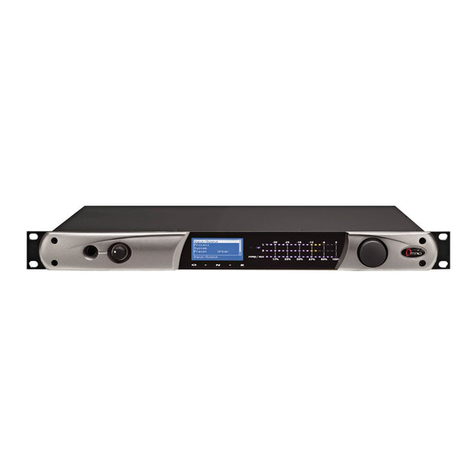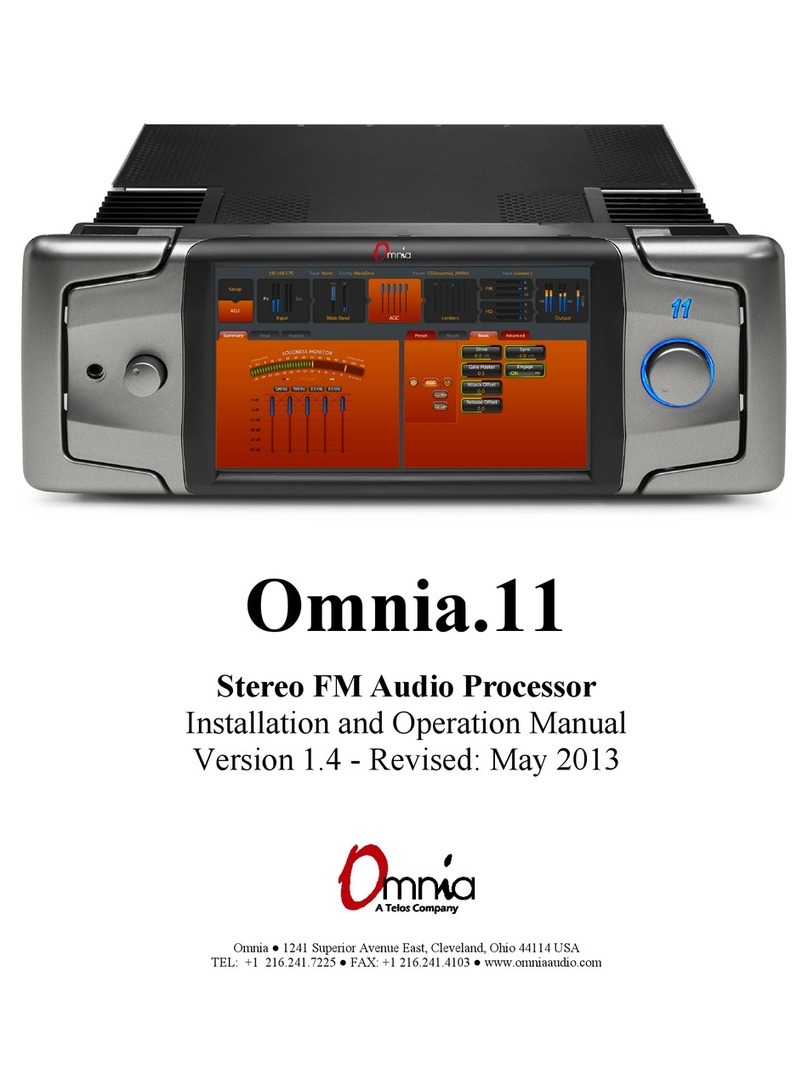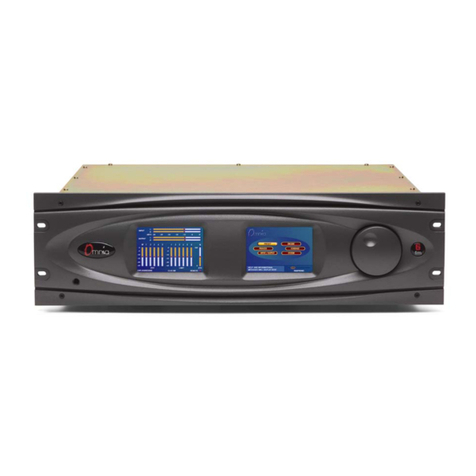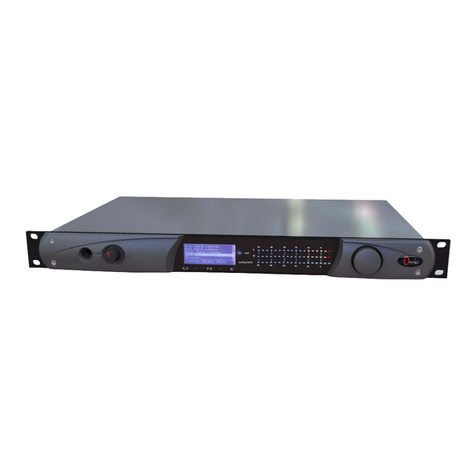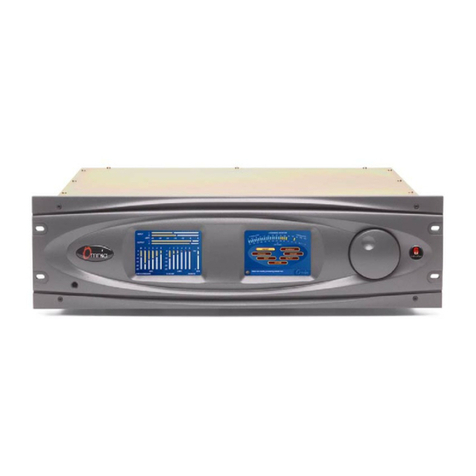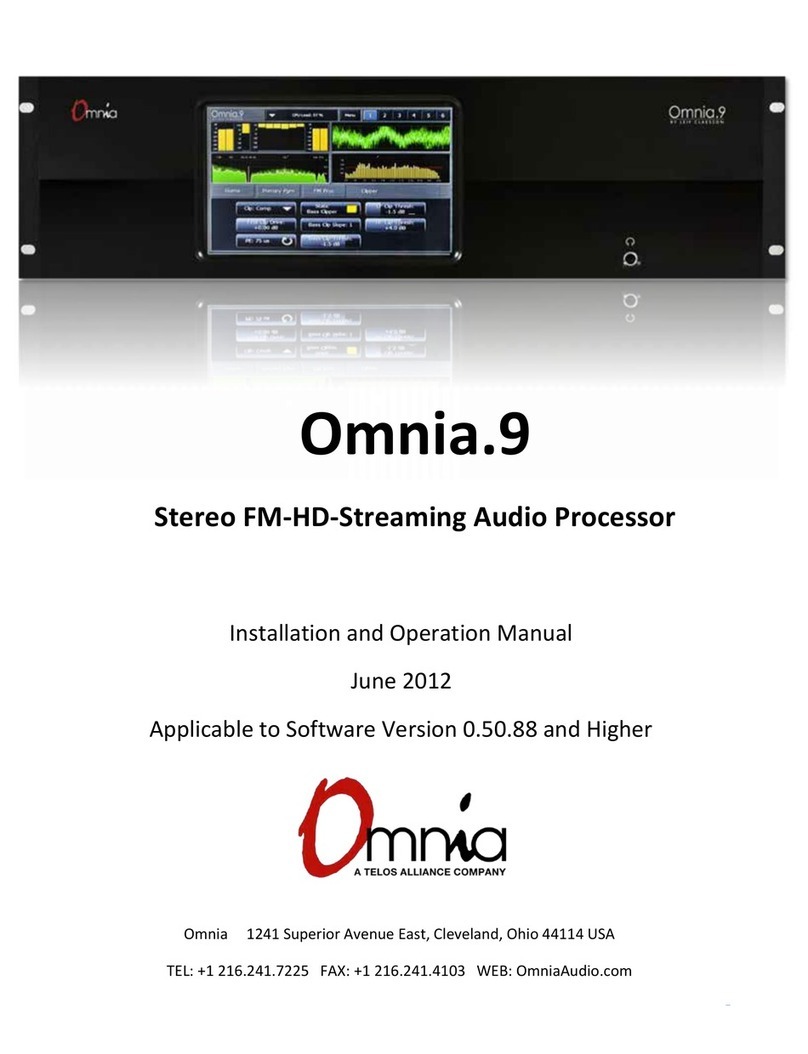
©2017 TLS Corp., All Rights Reserved. 1490-00176-001 —QUICK START GUIDE: OMNIA VOLT (FM VERSION) C17/15049
Quick-Start inStallation Guide
We have made this Omnia processor easy to set up and configure. This quick-start guide will take you through the
basic steps to configure your new Omnia VOLT to start delivering cleaner, clearer, louder, and more consistent FM
sound. Before we get started, let’s make sure you have what you need.
tHank You For purcHaSinG tHe oMnia Volt.
audio conFiGuration (cont.) audio conFiGuration (cont.)
Items you need to supply:
• RackwithanEIArackspaceformounting
• Philipsscrewdriverorscrewgun
• StandardXLRconnectorsifsettingupaline-level
analog audio source
• EthernetcableifsettingupaRemoteand/orLivewire
connection
REQUIRED EQUIPMENT, CABLES, AND ACCESSORIES:
There are a few additional items required for a successful installation. Check the list below and make sure
you have what you need.
Included items:
• OmniaVOLTAudioProcessor
• ACPowerCable
• RJ45StudioHubstandardpinoutAESAdaptors
• 4rackscrews
J K
1. Navigating output configuration on the front panel is simple and intuitive. Rotate the red jog wheel (K)
toscrollthroughoptionsdisplayedontheLCDscreen(J),increase/decreasenumericoptionsandmore.
Press the jog wheel (K) to make a navigation selection or to enter settings.
2. If you’re using L/R audio to feed a monitor, transmitter, or STL, once you are on the Input/Output menu
screen, rotate the jog wheel until Output is highlighted. Press to select.
3. Rotate the jog wheel to highlight the appropriate Level control for the output being used. Press to select.
4. Rotate the jog wheel adjust the output level as appropriate for the next device. Press to accept the setting.
5. Exit and return to the Output menu screen.
6. Rotate the jog wheel to highlight FM Options. Press to select.
7. RotatethejogwheeltohighlightFMPre-emph.Rotate the jog wheel to highlight the pre-emphasis
setting for your country or region. Only If BS-412 power limiting is required, turn it on from the Options
menu. If you’ve selected a L/R audio input device in previous steps, select the appropriate De-emph for
the following device.
Note: If you’re feeding an uncompressed digital STL, or want to use an audio output to feed the exciter,
turnDe-emphoffforthatoutput.ThismeansVOLT’sFMPre-emph,selectedatthestartofthisstep,
stays as part of the signal to the STL. VOLT should be the only device providing pre-emphasis or limiting.
This means you should disable any additional pre-emphasis or limiting in the exciter.
8. Repeat Steps 2 to 4 above to set other outputs.
9. Exit and return to the Input/Output menu screen.
output conFiGuration
10. Ifyou’reusingacompositeMPXoutput,rotate the jog wheel until Stereo Generator is highlighted.
Press to select.
11. Rotate the jog wheel to highlight Comp #1 or Comp #2, press to select. Rotate the jog wheel to adjust
for 100% modulation as shown on your modulation monitor, STL transmitter or exciter. Press to accept
the setting. Similarly, adjustPilotLvlforbetween8%-10%.Press to accept the setting and then exit and
return to the Main Menu.
12. From the main menu, rotatethejogwheeltohighlightProcessing,press to select.
13. RotatethejogwheeltohighlightPreset.Press to select. Feed normal program material and Rotate to
chooseapresetforyourinitialsetup.PresstoselectandreturntotheProcessingmenu.You’llbeable
to change the preset and/or fine-tune its settings later.
14. Ifyouwanttoadjustafactorypresetfromthefrontpanel,fromProcessing,rotate the jog wheel to
highlight QuickTweak. Press to select.
15. Rotate the jog wheel to highlight Clip Drive then press to select. Rotate to set the drive for the best
compromisebetweenloudnessanddistortion.You’llbeabletorefinethisadjustmentandothersat
any time using either the front panel interface or the browser based interface. Press the jog wheel to
accept then exit and returntotheProcessingmenu.
16. Ifyouhavemadechangestoapreset,fromtheProcessingmenu,rotate the jog wheel to highlight Save
Preset.Press to select. With Name highlighted, press and provide a preset name for the settings you just
created. When finished, rotate to Save and presstoreturntotheProcessingmenu.Thiscanserveasa
baseline while you do the next step.
17. Read the complete user manual! There are many layers to Omnia VOLT, and our easy to read manual will
help teach you how to shape your sound with the best in Omnia processing for your station and market.
Take the time to experiment, learn, and enjoy the results!
inStallation Help
For more details about the Omnia VOLT, or to download the full manual
please visit http://www.TelosAlliance.com/Volt.
If you have more questions, call the Telos Alliance 24/7 Support Team
at +1 (216) 622-0247, or email us at support@telosalliance.com.
We’re always happy to hear from you and offer help if you need it.
Your Setup iS coMplete!
That’sit!YouarenowreadytoexperienceOmniaVOLT,
for sound like never before.
oMnia VolttM (FM VerSion)












